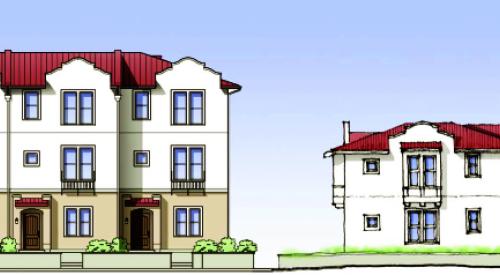| Patrick O'Toole
|
NEW ORLEANS -- Credit Andres Duany, Elizabeth Plater-Zurbek and others for making the acronym TND almost universally understood as the type of modern neighborhood that looks and feels like the ones in which our grandparents grew up. The trouble is, agree local planning officials gathered here for the annual conference of the American Planning Association, the bygone zoning that allowed these charming neighborhoods of yesteryear to be built is a distant memory in most places.
Today, when developers look to replicate the success of well-known traditional designs such as Seaside, Fla., or Kentlands, Md., they are faced with the unenviable task of asking local officials to virtually rewrite their existing codes and standards to allow key TND elements such as narrower streets, smaller front setbacks, street parking, etc. Aside from being costly to the point that most TNDs become uneconomic, the realities of current comprehensive planning laws have the practical effect of limiting TND as a widespread planning option.
But three states--Wisconsin, Pennsylvania and Connecticut--have passed new laws that enable easier approval of TNDs. Together, says attorney and planner Robert J. Sitkowski, these states are leading the way to greater planning flexibility by providing local officials with the tools they need to freely implement TND proposals.
"Most TNDs simply cannot be built under present planning laws," Sitkowski explains. "That is why we are seeing these laws."
Wisconsin has taken perhaps the most aggressive tack. Under its TND law, passed in 1999, all cities and villages with populations greater than 12,500 must adopt a model ordinance by Jan. 1, 2002. According to Brian Ohm, a planning law expert with the University of Wisconsin, the law affects about 60 local governments statewide.
Wisconsin's tradition of allowing local government discretion over aesthetically driven planning found in TNDs is not new. In 1955 a state Supreme Court ruling allowed local governments the ability to govern on the basis of aesthetics alone. Ohm says the law's principal benefit is its "bottom-up approach" that "waits for the private marketplace to respond."
By contrast, the TND law passed in Pennsylvania is voluntary. It is up to the discretion of local officials whether to codify the TND enabling changes made permissible by the state. Passed last July, the law gives a nod to the work of Duany and Plater-Zurbek, incorporating all of their rules for successful TNDs as set forth in their popular 1999 book, Suburban Nation.
Connecticut's route to TND enabling legislation was almost accidental. Adopted by the legislature in 1998, the bill passed below the radar of home builders and planners alike and passed without opposition. Called the Village Districts Act, it was entirely the result of the efforts of one small town named Brooklyn in the northeast part of the state, says Sitkowski. Its effect is perhaps the most broad-based of the three because it protects "distinctive town character" wherever it exists in the state. Local officials are now free to stipulate development that is "harmonious" with colonial areas of their towns and cities, allowing them to cite "scale and massing" issues of buildings and any number of streetscape matters.












